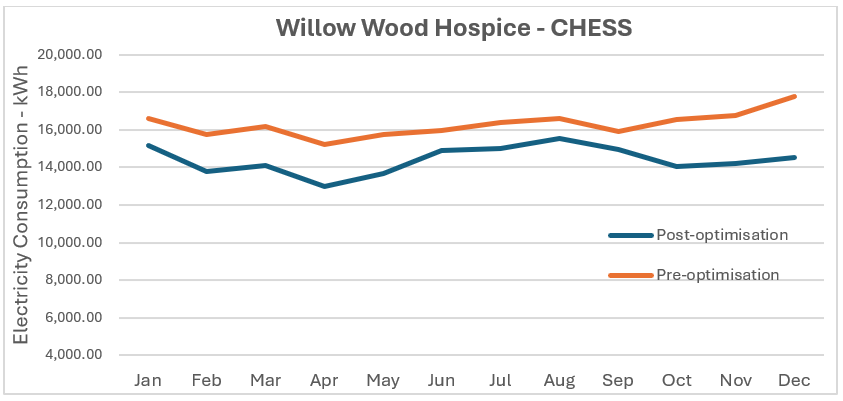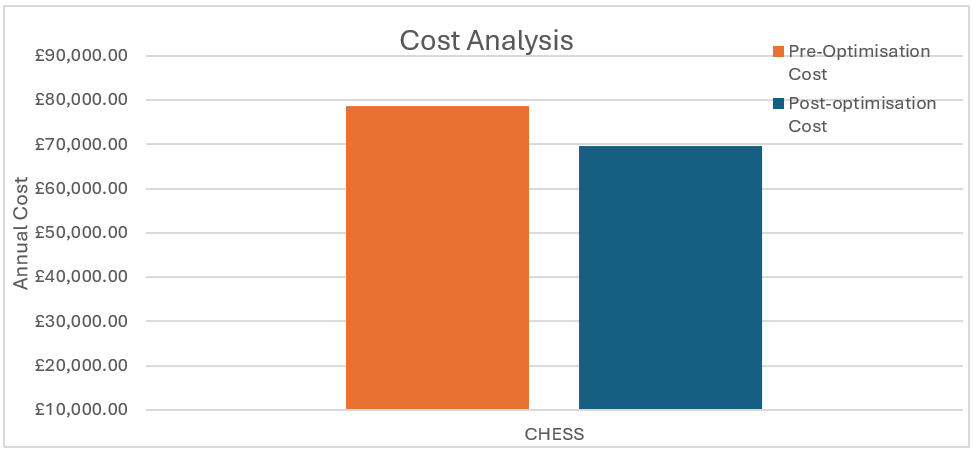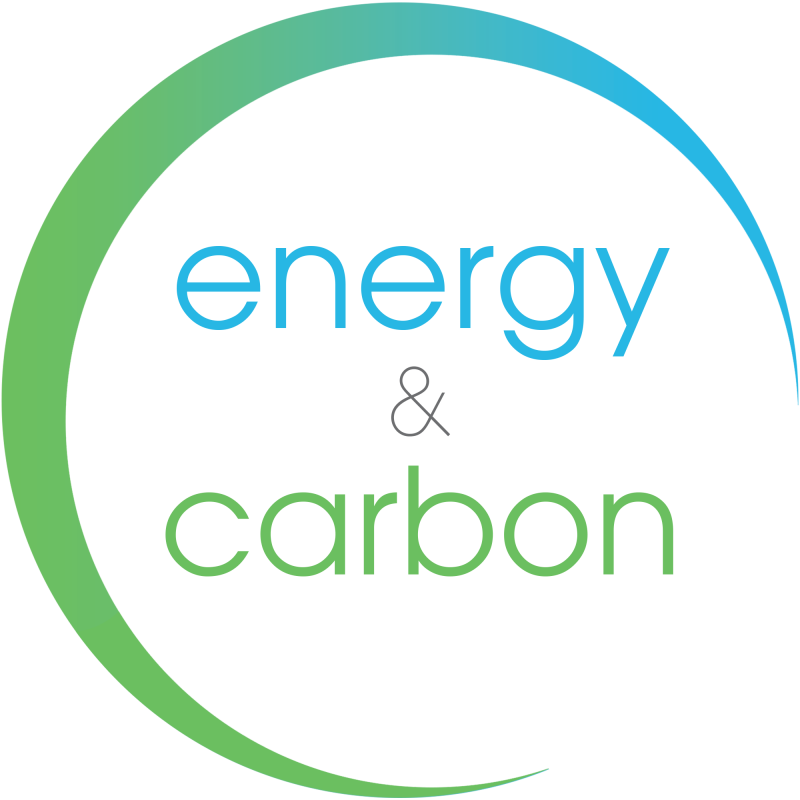Energy Savings through LED Lighting Upgrade
Background
Willow Wood Hospice, a charitable organization dedicated to providing palliative care, has undertaken an energy efficiency initiative to reduce electricity consumption and enhance sustainability. As part of our commitment to community sustainability, this assessment and support were provided on a pro bono basis under our CHESS (Care home and Hospice Energy Savings Service) initiative.
Identifying Opportunities
The assessment revealed that a significant portion of the hospice’s energy consumption was attributed to outdated lighting systems. By quantifying potential savings, we determined that replacing conventional lighting with LED technology could yield considerable reductions in energy usage, cost, and carbon footprint.
Methodology: Like-for-Like Retrofitting
To maximize cost efficiency, we adopted a like-for-like LED retrofitting approach. Instead of replacing entire fixtures, we selected LED alternatives that are compatible with the existing fittings. This method:
- Minimized installation costs by avoiding extensive rewiring.
- Reduced material waste, supporting overall sustainability goals.
- Allowed seamless integration with the existing infrastructure.
The lighting upgrade was implemented across key areas of the hospice, including in patient and resident’s rooms, corridors, and external spaces such as the car park.
Energy Savings Achieved
The upgrade led to a significant reduction in energy consumption. Before the LED retrofit, annual energy consumption was 195,437.05 kWh, which dropped to 172,866.4 kWh after installation—a reduction of 22,570.65 kWh. This improvement also reduced the energy intensity – electricity from 85 kWh/m²/year to 75 kWh/m²/year, advancing the CHESS rating from Silver to Gold.
In financial terms, this reduction equates to an estimated annual cost saving of £9,065, based on current electricity rates. This represents a 12% reduction in projected energy costs, calculated by comparing the expected cost (based on pre-upgrade consumption at current prices) with the actual post-upgrade energy costs.
Energy Savings Achieved
The upgrade led to a significant reduction in energy consumption. Before the LED retrofit, annual energy consumption was 195,437.05 kWh, which dropped to 172,866.4 kWh after installation—a reduction of 22,570.65 kWh. This improvement also reduced the energy intensity – electricity from 85 kWh/m²/year to 75 kWh/m²/year, advancing the CHESS rating from Silver to Gold.
In financial terms, this reduction equates to an estimated annual cost saving of £9,065, based on current electricity rates. This represents a 12% reduction in projected energy costs, calculated by comparing the expected cost (based on pre-upgrade consumption at current prices) with the actual post-upgrade energy costs.




Detailed Lighting Analysis
A detailed assessment was conducted on several lighting categories—covering areas such as the Annex, Kitchen Store Room, and Car Park. In each area, a comparison was made between the current conventional lights and the recommended LED replacements. Key points include:
- Annex Lighting: Representing a major share of the overall lighting bill, the retrofit led to significant reductions in both energy consumption and operating costs.
- Kitchen Store Room Lighting: Analysis demonstrated that switching to LED alternatives resulted in considerable weekly and annual savings.
- Car Park Flood Lights: The replacement of halogen floodlights with LED floodlights yielded dramatic savings in energy usage, contributing substantially to the overall annual cost reduction.
For each category, our calculations were based on the specific operational hours and new day/night electricity rates. Moreover, using a carbon emission factor of 247 g CO₂ per kWh, the retrofit resulted in an annual reduction of approximately 5,577.95 kg CO₂ (5.58 tonnes CO₂).
Environmental and Financial Impact
- Carbon Savings: The reduction in energy usage has led to a significant decrease in carbon emissions, supporting the hospice’s commitment to sustainability.
- Cost Savings: The LED retrofits have demonstrated rapid payback through substantial reductions in running costs, which have been carefully validated by our detailed lighting consumption analysis.
CHESS Model Rating Improvement
As a result of the energy efficiency improvements, Willow Wood Hospice has advanced from a Silver Rating to a Gold Rating in the CHESS model for electricity, reflecting its proactive approach to energy management and sustainability.
Conclusion
This initiative clearly illustrates how targeted energy efficiency interventions can deliver tangible benefits in terms of energy savings, cost reductions, and lower carbon emissions. Through our CHESS service, we are proud to support organizations like Willow Wood Hospice on their journey toward a greener, more sustainable future.
Prepared By:
M Hamza Shahzad
Natural Resource Optimisation Engineer
Energy and Carbon Reduction Solutions Limited
